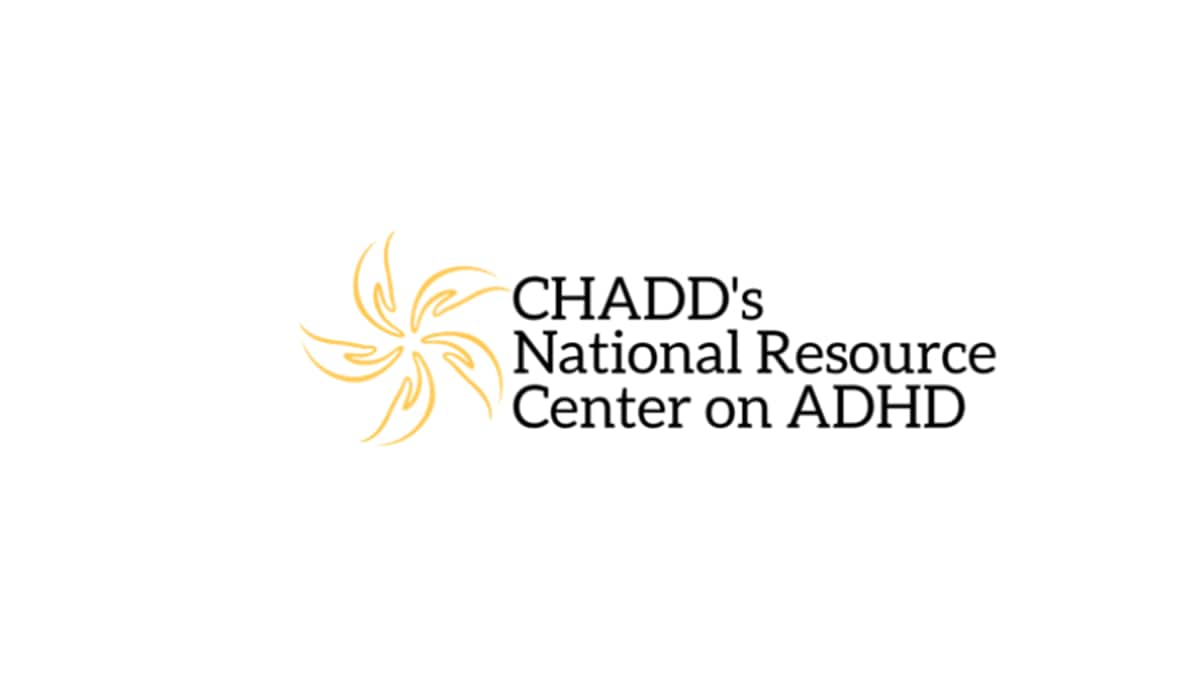At a glance
- Children with attention-deficit/hyperactivity disorder (ADHD) experience more obstacles in their path to success than the average student.
- Teachers and parents can help children with ADHD do well in school.

What to know
To meet the needs of children with ADHD, schools may offer
- ADHD treatments, such as behavioral classroom management or organizational training;
- Special education services; or
- Accommodations to lessen the effect of ADHD on their learning.

CDC funds the National Resource Center on ADHD (NRC), a program of Children and Adults with Attention Deficit/Hyperactivity Disorder (CHADD). The NRC provides resources, information, and advice for parents on how to help their child. Learn more about their services.
How schools can help children with ADHD
The American Academy of Pediatrics (AAP) recommends that the school environment, program, or placement is a part of any ADHD treatment plan.
AAP also recommends teacher-administered behavior therapy as a treatment for school-aged children with ADHD. You can talk to your child's healthcare provider and teachers about working together to support your child.
Classroom treatment strategies for students with ADHD
There are some school-based management strategies shown to be effective for students with ADHD:1
Did you know?
Behavioral classroom management
The behavioral classroom management approach encourages a student's positive behaviors in the classroom, through a reward system or a daily report card, and discourages their negative behaviors. This teacher-led approach has been shown to influence student behavior in a constructive manner, increasing academic engagement. Although tested mostly in elementary schools, behavioral classroom management has been shown to work for students of all ages.
Organizational training
Organizational training teaches children time management, planning skills, and ways to keep school materials organized in order to optimize student learning and reduce distractions. This management strategy has been tested with children and adolescents.
Teaching and supporting positive behavior
Special education services and accommodations
Most children with ADHD receive some school services, such as special education services and accommodations. There are two laws that govern special services and accommodations for children with disabilities:
- The Individuals with Disabilities Education Act (IDEA)
- Section 504 of the Rehabilitation Act of 1973
Learn more about IDEA vs Section 504
The support a child with ADHD receives at school will depend on if they meet the eligibility requirements for one of two federal plans funded by IDEA and Section 504:
What are the main differences between an IEP and a 504 Plan?
• 504 Plan: Provides services and changes to the learning environment to meet the needs of the child as adequately as other students and is part of Section 504 of the Rehabilitation Act.
Accommodations
IEPs and 504 Plans can offer accommodations for students to help them manage their ADHD, including the following:
- Extra time on tests
- Instruction and assignments tailored to the child
- Positive reinforcement and feedback
- Using technology to assist with tasks
- Allowing breaks or time to move around
- Changes to the environment to limit distraction
- Extra help with staying organized
Did you know?
There is limited information about which types of accommodations are effective for children with ADHD.3 However, there is evidence that setting clear expectations, providing immediate positive feedback, and communicating daily with parents through a daily report card can help.4
What teachers and school administrators can do to help
For teachers, helping children manage their ADHD symptoms can present a challenge. Most children with ADHD are not enrolled in special education classes but do need extra assistance on a daily basis.
Helping students with ADHD
Positive discipline practices at school can help make school routines more predictable and achievable for children. Children with ADHD benefit when schools use positive rather than punitive disciplinary strategies.
Close collaboration between the school, parents, and healthcare providers will help ensure the child gets the right support. Here are some tips for classroom success:
Communication
- Give frequent feedback and attention to positive behavior.
- Be sensitive to the influence of ADHD on emotions, such as self-esteem issues or difficulty regulating feelings.
- Provide extra warnings before transitions and changes in routines.
- Understand that children with ADHD may become deeply absorbed in activities that interest them (hyper-focus) and may need extra assistance shifting their attention.
Assignments and tasks
- Make assignments clear—check with the student to see if they understand what they need to do.
- Provide choices to show mastery (for example, let the student choose among written essay, oral report, online quiz, or hands-on project.
- Make sure assignments are not long and repetitive. Shorter assignments that provide a little challenge without being too hard may work well.
- Allow breaks—for children with ADHD, paying attention takes extra effort and can be very tiring.
- Allow time to move and exercise.
- Minimize distractions in the classroom.
- Use organizational tools, such as a homework folder, to limit the number of things the child has to track.
Develop a plan that fits the child
- Observe and talk with the student about what helps or distracts them (for example, fidget tools, limiting eye contact when listening, background music, or moving while learning can be beneficial or distracting, depending on the child).
- Communicate with parents on a regular basis.
- Involve the school counselor or psychologist.
More information for teachers and school administrators
CHADD's National Resource Center on ADHD provides information for teachers and educators from experts on how to help students with ADHD in the classroom.

Parent education and support
How to best advocate for your child

What every parent should know
- School support and services are regulated by laws. The U.S. Department of Education has developed a "Know your rights" letter for parents and a resource guide for educators to help educators, families, students, and other interested groups better understand how these laws apply to students with ADHD so that they can get the services and education they need to be successful.
- Healthcare providers also play an important part in collaborating with schools to help children get the special services they need.5
- Evans SW, Owens JS, Wymbs BT, Ray AR. Evidence-Based Psychosocial Treatments for Children and Adolescents With Attention Deficit/Hyperactivity Disorder. J Clin Child Adolesc Psychol. 2018 Mar-Apr;47(2):157-198.
- DuPaul GJ, Chronis-Tuscano A, Danielson ML, Visser SN. Predictors of Receipt of School Services in a National Sample of Youth With ADHD. J Atten Disord. 2019 Sep;23(11):1303-1319.
- Harrison JR, Bunford N, Evans SW, Owens JS. Educational accommodations for students with behavioral challenges: A systematic review of the literature. Review of Educational Research. 2013 Dec;83(4):551-97.
- Moore DA, Russell AE, Matthews J, Ford TJ, Rogers M, Ukoumunne OC, Kneale D, Thompson-Coon J, Sutcliffe K, Nunns M, Shaw L. School-based interventions for attention-deficit/hyperactivity disorder: a systematic review with multiple synthesis methods. Review of Education. 2018 Oct;6(3):209-63.
- Lipkin PH, Okamoto J; Council on Children with Disabilities; Council on School Health. The Individuals With Disabilities Education Act (IDEA) for Children With Special Educational Needs. Pediatrics. 2015 Dec;136(6):e1650-62.
- CHADD. Education. Available at: https://chadd.org/for-parents/education/. Accessed on November 17, 2023.
- CHADD. Overview. Available at: https://chadd.org/for-educators/overview/. Accessed on November 17, 2023.
- CHADD. About the National Resource Center. Available at: https://chadd.org/about/about-nrc/. Accessed on November 17, 2023.
- CHADD. Individuals with Disabilities Education Act. Available at: https://chadd.org/for-parents/individuals-with-disabilities-education-act/#:~:text=What%20are%20my%20responsibilities%20as%20a%20parent%3F. Accessed on November 17, 2023.
- U.S. Department of Education. Know Your Rights: Students with ADHD. Available at: https://www2.ed.gov/about/offices/list/ocr/docs/dcl-know-rights-201607-504.pdf. Accessed on November 17, 2023.
- U.S. Department of Education. Dear Colleague Letter and Resource Guide on Students with ADHD. Available at: https://www2.ed.gov/about/offices/list/ocr/letters/colleague-201607-504-adhd.pdf. Accessed on November 17, 2023.
- The American Academy of Pediatrics. How Schools Can Help Children with ADHD. Available at: https://www.healthychildren.org/English/health-issues/conditions/adhd/pages/Your-Child-At-School.aspx. Accessed on November 17, 2023.
- ChangeLab Solutions. Developing Positive Disciplinary Strategies to Support Children with ADHD and Tourette Syndrome. Available at: https://www.changelabsolutions.org/product/positive-disciplinary-strategies-children-adhd-tourette?utm_source=ChangeLab+Solutions+Active&utm_campaign=0c815dc553-CMH-School-Disc_Launch_724&utm_medium=email&utm_term=0_-0c815dc553-%5BLIST_EMAIL_ID%5D. Accessed on July 17, 2024.
- Society of Clinical Child & Adolescent Psychology. Inattention & Hyperactivity (ADHD). Available at: https://effectivechildtherapy.org/concerns-symptoms-disorders/disorders/inattention-and-hyperactivity-adhd/. Accessed on November 17, 2023.
- Center on Positive Behavioral Interventions & Supports (PBIS). Students with Disabilities. Available at: https://www.pbis.org/topics/students-with-disabilities. Accessed on October 22, 2024.
